

ONEOF Accuracy: verifiying watch precision in real time
A device small enough to fit in a pocket which can test the precision of a mechanical watch in only a few seconds and displays the results on your Smartphone. Science fiction? No. Just a must-have that we have tested.
The device was designed and developed by the Swiss company H2i. Watchonista.com has tested it for six months and our verdict is that every mechanical watch expert should take it with them wherever they go.
Summer 2015: Emanuel Baudet and Jean-Charles Rousset introduced a mobile device to the editorial team of Watchonista.com that checks the reliability of mechanical watches when connected to an iPhone or iPad. While we were immediately intrigued by the potential of this new accessory, we still wondered how we would go about testing the reliability of the ONEOF Accuracy before actually writing anything about it.
What time is it exactly?
It's a simple concept actually, which bodes well: a sensor housed in a small case, which once connected to your SmartPhone, makes a sequence of measurements of a mechanical watch's precision through an application. Additionally, its compact and simple design, boasting a perfect finish, is strictly functionalist. The grey anodized aluminium surfaces are finely brushed and contrast with the finely shotblasted chamfering. This is 100% watchmaking. The elegant and subtle ONEOF logo is also used as a point of reference to place the watch during tests, as an ode to Ludvig Mies Van Der Rohe's famous motto: "less is more".
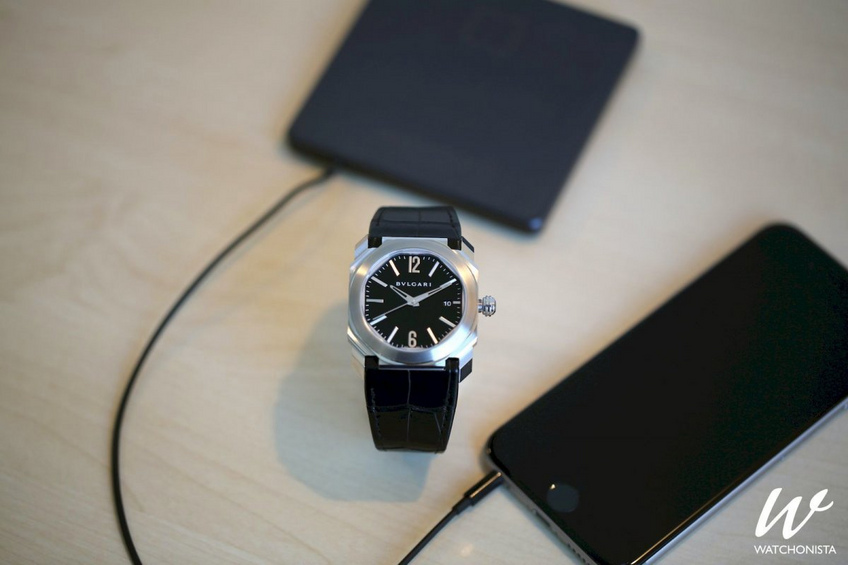
But the object is not beautiful and well-crafted just to be admired and touched. Indeed, the good quality of the case also seems to be a key element to motivate any potential user to test their watch on it, with no risk of damaging its value, whatever it is. The ONEOF Accuracy is thus convincing in its robust and delicate look that does not have distracting or useless attributes. It only comes with a black cable that connects to the microphone jack of your Smartphone. Very simple and efficient indeed. The achievement of such successful harmony between form and function is definitely praiseworthy.
When we began our tests, the application was not yet available on the Apple store as the meticulous brand from Cuppertino had not yet validated it. Thus, Jean-Charles Rousset directly installed, à la Frankenstein, the beta version of the software on our iPhones and ont our office Ipad. Propelled to the Early Adapter status, I connected the borrowed device’s cable to my iPhone and started the application.
Choosing a random watch
But then we were faced with a dilemma. We had not yet decided which watch we would choose for our inaugural test. Since we assumed that the worst was yet to come, we started from the beginning. Hence, we chose a brandless Swiss watch from the 1950s equipped with a mechanical movement of 17 rubies and a Swiss escapement lever. In other words, we chose a rusted "tractor" abandoned in a wet barn and which had been partially exposed to bad weather for 50 years.
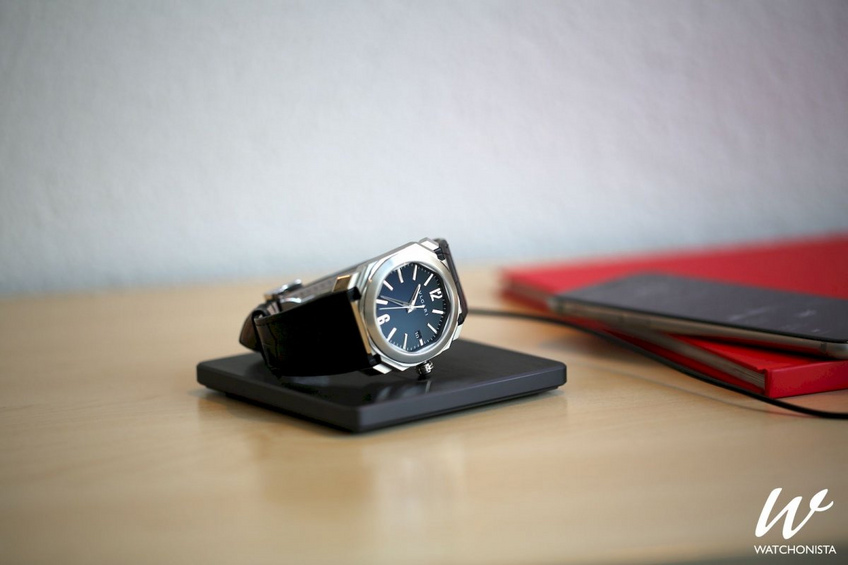
The test is done in one step and it demands the undivided attention of the tester. If the watch's crown is screwed, it needs to be unscrewed and then the piece has to be placed against the center of the ONEOF logo.
The simplicity in its use – merely placing the crown against the logo – reflects the sobriety of the device itself. A sensor captures – in the best possible way – the sound that can be heard from the escapement in every mechanical watch. The clearer the capture, the more precise the results.
Once the watch is correctly placed on the case, a simple press with the finger starts the measurement sequence, which lasts approximately 30 seconds. The graphic interface of the application then starts crackling in every direction with broken curves, as if it were the graphic of a stock market crash. Amused by the chaotic pace of the graphs, Baudet launched into an explanation of the tool's subtleties. This frantic race was a sure sign that there was something wrong with the venerable movement. The fact that the curves were often broken indicated that one of the geartrains of the movement must have one or more tired wheels. In a flash, I was transported to a vision of myself in the middle of a Watch Exchange trying to explain to an unscrupulous seller that his "entirely revisited" watch had some minor mechanical problems. That's the first practical benefit.
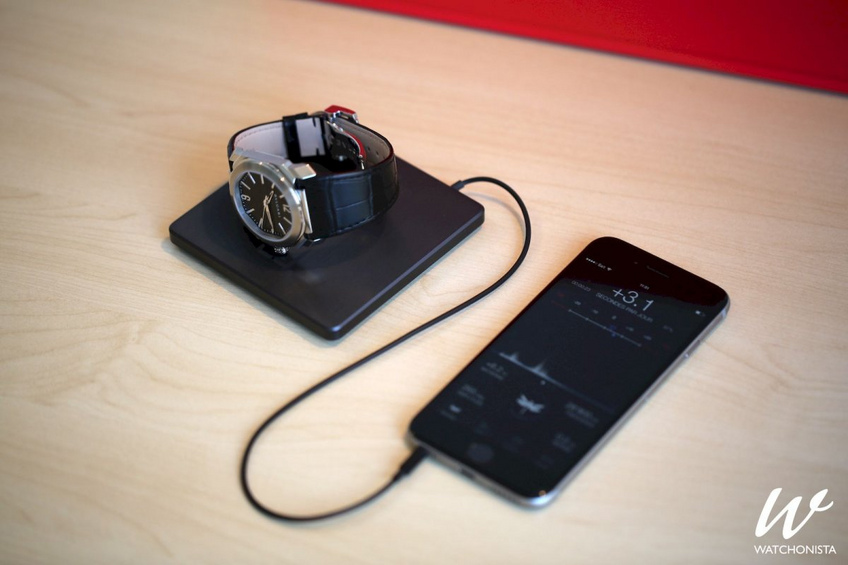
Once the sequence is over, the precision is displayed by indicating the daily gain or loss. Out of respect for the family and friends of the noble timepiece, we won't go into details and save the results for posterity. So, in 20 seconds, we learned that the movement was damaged and that it would have been more reasonable to ask for the advice of the public or to call a friend since, with this beat up watch, the 50-50 chance option did not look promising.
Testing a COSC Certified Chronometer
In order to carry out a more coherent test, we tested a Swiss watch that had been recently certified a chronometer by the COSC. COSC standards stipulate that a watch must have a precision range between - 4 and + 6 seconds per day (gain or loss, for those who may not follow) to be given the Certified Chronometer title. It is important to note that the processes leading to a COSC certification include measurements carried out in different positions and several constraints imposed upon the movement. These multiple and varied tests help to make the results more reliable. However, their designers do not agree that the ONEOF Accuracy is a replacement for this series of laboratory tests. Yet, its function helps to to evaluate a watch's functioning with a precision similar to the instruments used by professionals.
We will not make you wait any longer: the interface of the application displayed + 2.6 seconds of daily gain, which perfectly falls within the range for a COSC Certified Chronometer.
The reliability and precision of the ONEOF Accuracy next to the famous Witschi
There are several companies that produce chronometric measuring instruments for professionals. It was incidentally the main field of competence and expertise of H2i SA, before the ONEOF Accuracy – the "civil version" – was developed. The famous Witschi remains a favourite amongst most professionals as it helps to place the watch in an accurate way and hence carry out tests in different positions. However, the quartz of the ONEOF Accuracy guarantees a much higher precision than even that of your Smartphone. Thus, the only way to determine the reliability of this accessory consists of making comparative tests with a professional instrument.
Thanks to the help of a watchmaker friend, we installed a Witschi in our offices and started most rigorous tests. In six months, we have tested eight different watches with the two instruments. Also, almost all pieces we managed to get our hands on, we tested with the ONEOF Accuracy, with which we repeated measurements five times. Each time, we moved the watch very slightly to obtain an average.
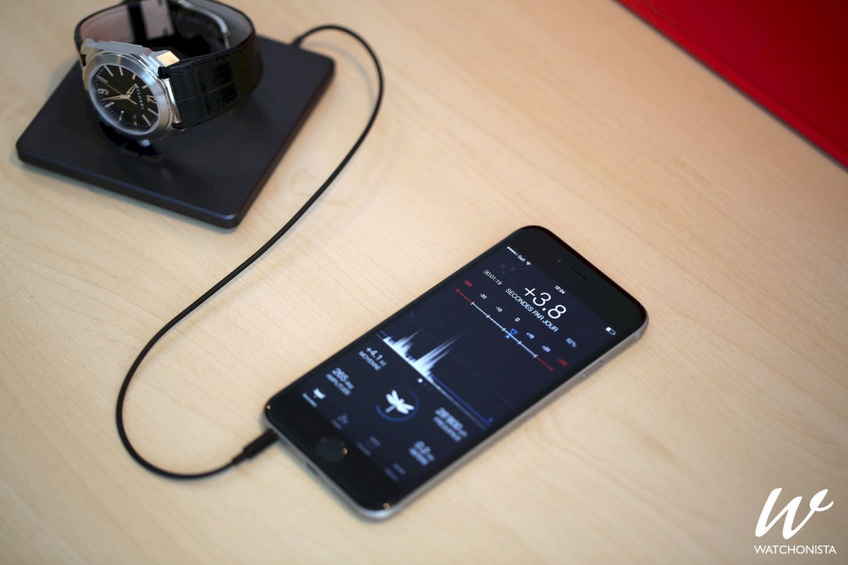
When the crown was incorrectly unscrewed or when the watch was badly positioned, the measurement was erroneous. It is thus advised to carry out at least a second measurement to validate the results of the first one.
The result was unprecedented: in the eight tests, the variations in rate were very similar between the ONEOF Accuracy and the Witschi, with an average difference of 0.2 seconds. Minor and rather insignificant differences also appeared during the five successive measurements. This is completely legitimate since watches are, by definition, "living" micromechanical assemblies. In terms of an accurate position of the watch and the different positions of the tests, the Witschi is undoubtedly the tool that offers most similar testing conditions to H2i’s tool.
Different uses
However, it should be noted that the two instruments do not have the same use or cost. The Witschi is designed for professionals and must thus be a sure guarantee of a watch's precision. The ONEOF Accuracy can above all be used by any owner and buyer of watches, whether the latter are new or collectibles and in good or bad condition. Rigorous collectors will want to buy a Witschi to obtain the most accurate measurement of their watches’ precision.
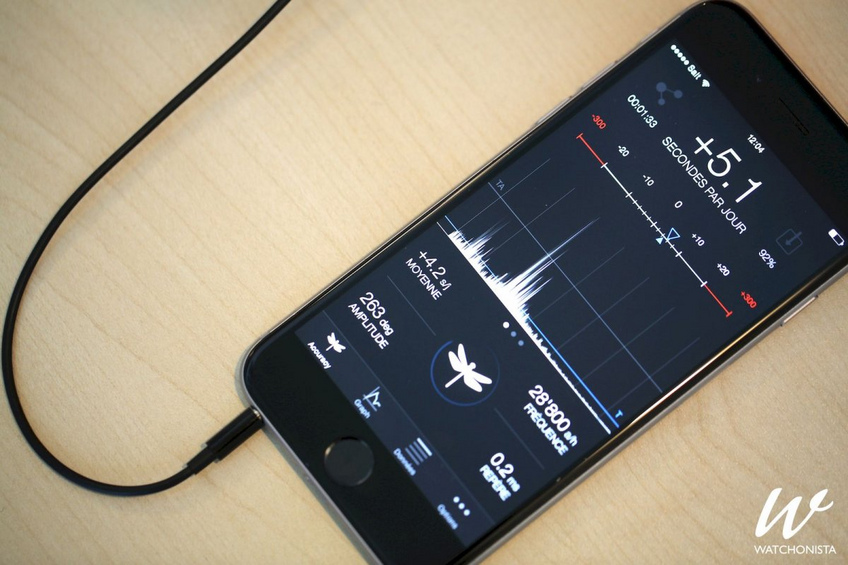
But in that case, I would advise to also buy an atomic clock so in order to have a suitable time reference. By the way, good luck to those who seek to obtain such precise time setting. Indeed, it would require a good deal of luck, to even activate the clock with such precision, as it is highly likely to miss a tenth of a second.
For watch experts or, why not, travelling professionals, we think that the ONEOF Accuracy's tolerance margin is more than enough to measure or validate the precision of watches before they are bought. The results also help to make a good diagnosis of the chronometric state of the watches in a collection, and they even point things out such as a toothless wheel or an off-axis pinion.
As far as mobility is concerned, the Witschi is not ideal as it has approximately the same size of a Fax machine from the 1980s. Its functionalist industrial design is characteristic of objects that do not need to be beautiful as they are used by professionals. It would seem that it was not blessed by the "Ergonomy" fairy. But that is not much of a problem as it is mainly used in functioning procedures that are important to guarantee accurate test results.
Bvlgari Octo Solotempo: elegant and reliable
For this article, we chose an old brandless watch as our aim was not to test watches per se. However, Bvlgari volunteered to play along and lent us the Bvlgari Solo Tempo equipped with the BVL-191 caliber that had been set at the factory. It was entirely designed and produced in-house in a unity (based in La Chaux-De-Fonds) that only produces this movement. We have had the chance to visit this impressive factory equipped with solid machinery and which is perfectly optimized for a production that was made reliable thanks to industrial ingenuity. With an average 5.1 seconds gain on the five successive measurements, this in-house caliber boasts remarkable precision qualities for a watch that is not COSC-certified but which nevertheless fits perfectly within the tolerance margin required for certification.
We thus consider that the ONEOF Accuracy must accompany those who buy and collect watches. The mobile and elegant accessory, which is currently being developed in different versions including one with a demagnetizer, has already become essential to us.
More information, other media articles and the brand's e-shop on the official website http://one-of.com.









